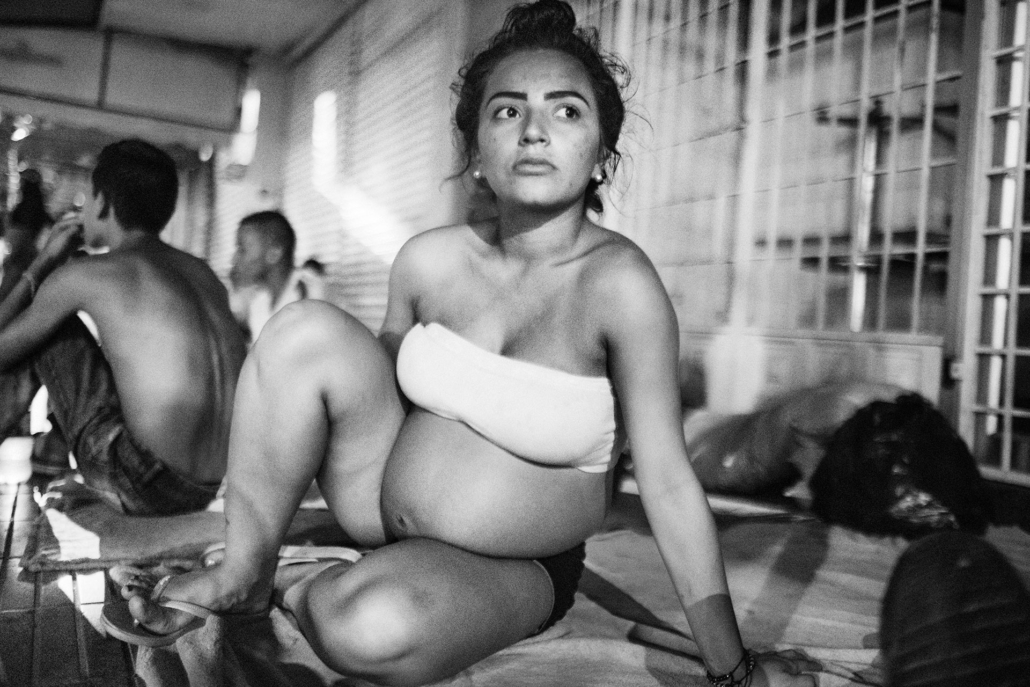This post is also available in:
 French
French
Due to the pandemic, the ANI has decided for its 17th edition to exhibit the three awards ANI-PIXTRAKK from the last three years 2019, 2020, and 2021.
The six other winners will be screened at the opening on March 16, 2022, at the École des Gobelins in Paris.
These three photographers have been selected among the favorites of VISA POUR L’IMAGE-PERPIGNAN. The ANI Visas are the result of a collaboration, which began more than 20 years ago, between VISA POUR L’IMAGE-PERPIGNAN (International Photojournalism Festival) and the National Association of Iconographers.
During the professional week of the festival, the ANI organizes in this context, readings of portfolios and meeting on this occasion beginner and / or confirmed photographers. The winners received the ANI-PIXTRAKK prize, worth €5,000, during the screening evening in September, in Perpignan.
ANI-PIXTRAKK 2021 Prize : Nicoló Filippo Rosso (Italy) : « Exodus »
In 2016, a political and socio-economic crisis forced many Venezuelans to leave their country. The reasons given are violence, lack of food, medicine, lack of essential services, and the loss of wages linked to the political situation. According to the UNHCR, in October 2019 around 4.9 million Venezuelans left their country, including 1.6 million to Colombia. Others crossed Colombia, and settled in neighboring countries. Venezuela has closed its borders with Colombia which led, in February 2020, to the presence (or emergence) of 300 clandestine points, currently still active to cross the border.
More than half of Venezuelan migrants in Colombia have no regular status, no health coverage, no access to education, or to the world of work. Charities or NGOs provide medical care and food. Many people end up living in makeshift camps or on the streets.
At the beginning of 2020, the Colombian government created two new residence permits which gave more than 100,000 Venezuelans permission to work. Parents whose children were born in Colombia can acquire the nationality, but many migrants remain destitute and without status.
Born in 1985, Nicoló Filippo Rosso is an Italian photographer based in Colombia. With a literary diploma from the University of Turin in Italy.
In 2011, he became interested in photography while living in an indigenous community in the region of Putumayo, in the Amazon.
He works on long-term projects and also on editorial assignments for clients such as Bloomberg News, The Washington Post, BusinessWeeknd, Le Point, Der Spiegel, Sette Corriere, Vice, Internazionale, Il Reportage and for international NGOs such as Americares, and Catholic Relief. Services (CRS).
Since 2016, Nicoló has been observing the impact of mining operations and the inhabitants of the La Guajira peninsula in Colombia. A work exhibited throughout the world and published in the international press.
ANI-PIXTRAKK 2020 Prize : Odhràn Dunne (France) : « A Great Send Off »
In Ireland the funeral takes place during two days.
Two days during which the family rarely separates from the deceased. Two days during which, one after the other, friends, neighbours, etc. Come to show their respect, to have a last word, a last kiss, a last caress. A longer time than in other cultures, during which relatives immerse themselves in and appropriate the departure of the deceased. A break from the routine continuum of everyday life to focus only on the first stages of mourning, and the last goodbye.
During this process, marked by different highlights, the family receives as much as it gives: in the chapel where, for three hours, the family shakes hands with all those who have come to pay homage, the funeral wake in the house of one of its members, then to the church, the burial, etc. Traditionally, hospitality is at the heart of these funerals because the family honors the memory of the deceased by generously receiving guests in their home. Biscuits, tea, soup, beer, and other dishes are prepared and made available to all. Through these different moments the emotions are mixed to the rhythm of remembered stories. In the midst of the living who celebrate the life of the newly dead, the body in its coffin sits enthroned, in full view. Everyone can approach it, touch it, according to their desire. Thanks to this organization there is a form of habituation at the start, nothing is rushed and everyone has time to find their rhythm and their relationship to death.
Joan Dunne died on March 6, 2019 in Mullingar, the town where she lived most of her life. Her six children, and her family, respected the traditions of their country by offering her a funeral proper to their culture so that she had “a great send off”.
After a baccalaureate in electrical engineering and audiovisual training at the new Sorbonne, Paris 3, Dunne Odhràn left for Ireland for seven months to do his first photo reportage on the celebrations of the centenary of the first Irish uprising; The Easter Rising and to discover a little more about his Irish origins.
On the strength of this experience, he decided on his return to perfect his photographic practice, with the formation of EMI-CFD in 2017. Since then, he has worked freelance and collaborated with Le Monde, the magazine Manière de voir and the PSG Magazine. In 2019, he was the winner of the Paris Match student photoreportage prize and had exhibition at the “Off” festival of the Promenades Photographiques de Vendôme.
From 14/03/2022 to 01/04/2022
Les Gobelins, l’École de l’image
73 Bd Saint-Marcel
75013 PARIS
France
Opening hours : From Monday to Friday from 9 a.m. to 6 p.m.
www.ani-asso.fr



